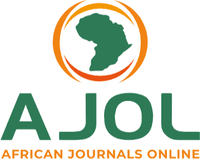Assessment of the Non-Triglyceride Constituents of Njangsa (Ricinodendron heudelotii) Seed Oil
DOI:
https://doi.org/10.56892/bima.v7i4.549Keywords:
Nangsa, Chromatogram, Spectrum, Non-triglycerideAbstract
Njangsa seeds are widely used in West Africa as a spice for seasoning different dishes. The oil extracted from njangsa seeds is highly valued and expensive because of its aroma, taste, and bright golden colour. This study is carried out with the aim of determining the content of non- triglyceride component of njangsa seed oil. Njangsa seed oil was extracted with n-hexane, and some of its quality parameters were assessed. Spectroscopic analysis of the oil was carried out using IR and GC-MS spectroscopy. The yield of the oil extraction was 45.9% and the result of quality evaluation gave iodine value; 165.8 gI2/100g, acid value1.39 KOH/g, Peroxide value 7.2 Meq/kg. The IR spectrum shows absorption peaks that revealed the presence of –OH, C=O, -C-O, C-C, C=C, and C-H functional groups. The GC-MS results revealed the presence of 24 different compounds of different classes that include alkanes, alkenes alcohols, esters, carboxylic acids, aldehydes, oxirane, and sulfur containing compounds. Njangsa seed oil therefore contains different type of non-triglyceride compounds that are responsible for its flavor, colour and other taste attributes that makes njangsa seed oil more appealing to comsumers.





